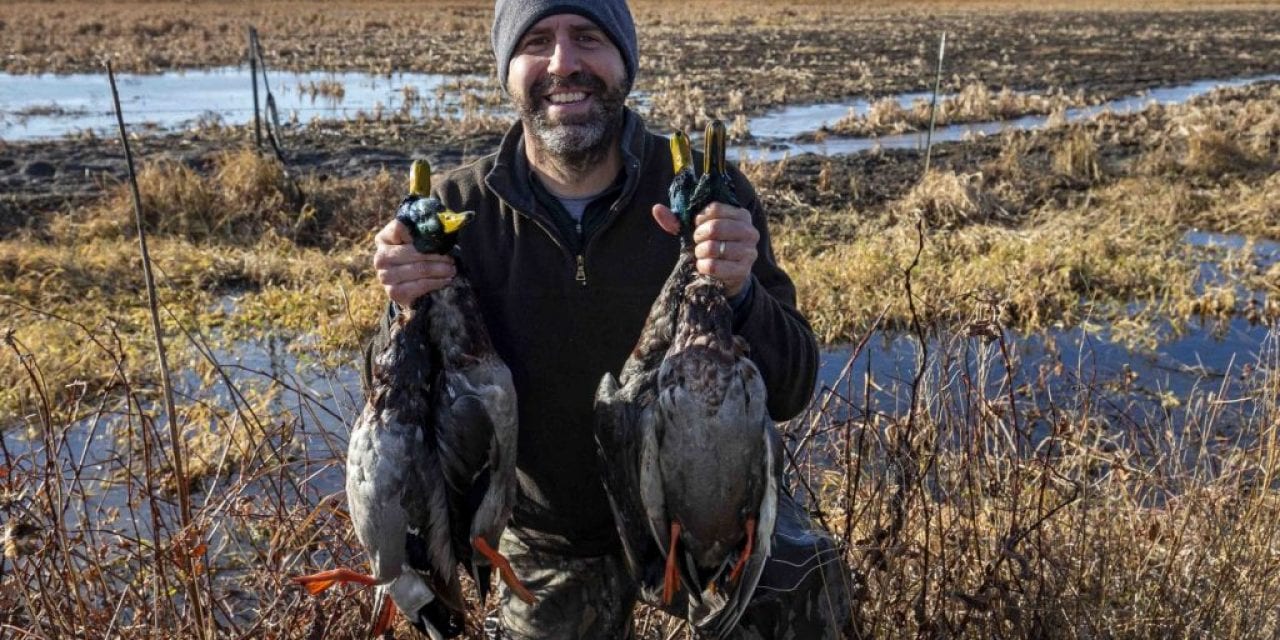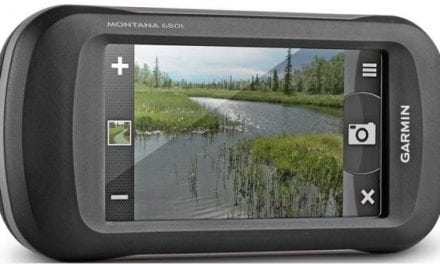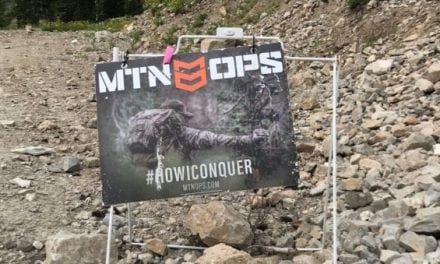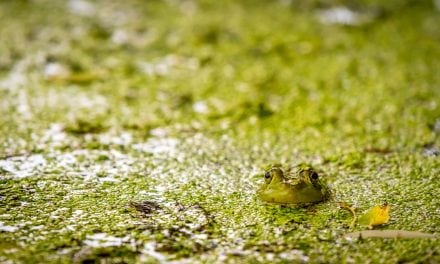The Joint Venture and the Rainwater Basin
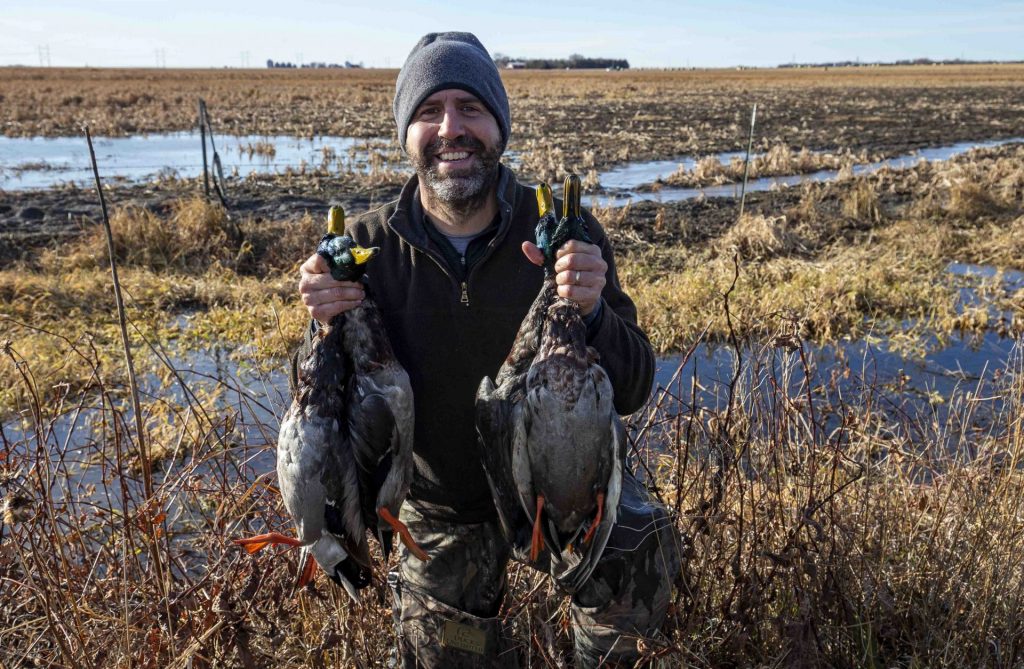
Story and Photos by Jeff Kurrus
By Jeff Kurrus
Late this fall, I had the opportunity to spend some time with Rainwater Basin (RWB) Joint Venture Coordinator Andy Bishop, who toured me through the Basin, meeting ranchers and landowners who have very intimate knowledge of this landscape and how they benefit from the wetlands, and how the wetlands benefit from them. I also had the chance to spend some time on the basins myself, shotgun in hand in search of one of the reasons why these basins are so important: ducks.
The Ranchers
When Andy introduced me to Kim Seibert, I immediately knew I had met a character. Wearing a parky floppy hat and having a feint resemblance to actor Sam Elliot, Kim is a storyteller. He quickly began spinning tales about his adventures as a rancher, from the time he had to get cows off Interstate 80 in the middle of the night because someone had left a gate open to the countless times he had been stuck near the wetlands themselves when they looked dry upon first glance. “There’s a lot more water underneath the surface than what you see,” he said with a smile.
Kim is a fifth generation farmer/rancher with deep ties to this landscape and actively involved in the local community. He is president of Nebraska Cattlemen’s York/Hamilton County Local Affiliate and oversees a diversified family farm operation that includes row-crops and cattle production. He has grown his operation by working with Nebraska Game and Parks Commission public land managers to graze several Wildlife Management Areas (WMAs) – including both the North and South Kirkpatrick basins.
Andy began working with Nebraska Cattlemen and their local affiliates 10 years ago to improve opportunities for local producers to integrate public and private wetlands into their farm/ranch operations. Kim has embraced the opportunity to work with area habitat managers to achieve mutual goals. “What’s been fun for 20 years is watching what my cattle eat and when they eat it,” said Kim. “And everything grows different depending on how wet or dry it is. One time, for example, we had a nice 70-degree day in August and my cows are in the middle of the water puddle. They’re not there to stay cool – they’re eating some sort of plant right under the surface.”
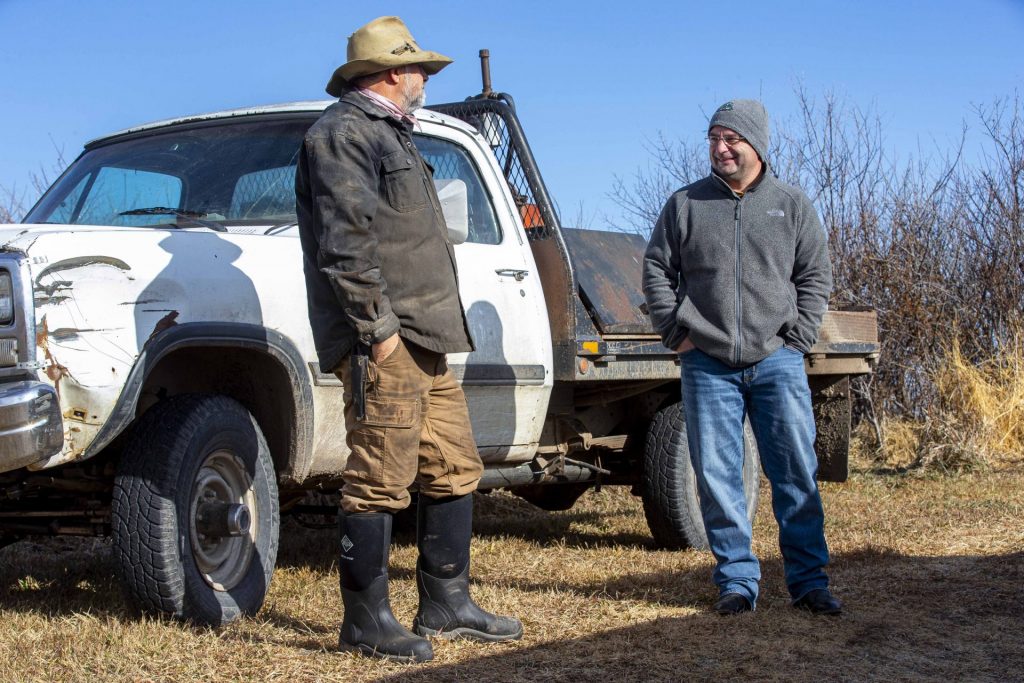
When biomass is measured, Kim went on to say, there’s a lot of nutrition in the wetlands themselves for a variety of species, including cattle. At one time, researchers would estimate that there were 2,000 pounds of biomass per acre. Nowadays, however, with cattails and reed canary grass included, these lands could produce 9,000 pounds per acre, which is good for cattle. This has promoted a higher stocking rate to more efficiently utilize this growth. When stocked appropriately, it’s not just good for cattle gain, it’s also good for ducks. When these dominant vegetation communities are reduced it increases presence of open water as well as available foraging and roosting habitat.
The Rainwater Basin Joint Venture Partnership uses habitat models to estimate acres of habitat needed to support the 8.6 million waterfowl that rely on this region. In simplest terms, it is diet budget. A duck needs 292 kilocalories per day. “Under average climatic scenarios, the RWB needs 60,000 acres of wetlands to provide these foraging resources,” said Andy, “and what we do is fairly straight forward. How many acres do we need to support the number of ducks that rely on this region? And how do we get the necessary habitat on both public and private lands?”
“So I need to eat as many grasses as I can so we have more weeds for ducks,” smiles Kim. “Got it.”
Ranching is a family business for Jerry Stevens as well as Steve and Brian Shaw, and it was evident as soon as we were introduced for the first time. Like Kim Seibert, Jerry Stevens is a fifth generation producer in Fillmore County whose family operation includes a combination of row-crops, wetlands and Blue River pastures. Jerry worked with the Rainwater Basin Joint Venture partners to restore a wetland and modify his irrigation infrastructure so the restored wetland could be integrated into his operation as pasture and not interfere with pivot irrigation.
“I watched all of the effort my dad and mom went through to try to drain this wetland to maximize crop production, and even with the pits and land leveling we always had a hard time getting a crop off those acres.”
“I have witnessed a lot of these wetlands disappear from the landscape,” continued Jerry, “and working with the Partnership we have found a way to keep them as part of our operation.”
“He got more irrigated acres,” said Andy, “and we got a restored wetland.”
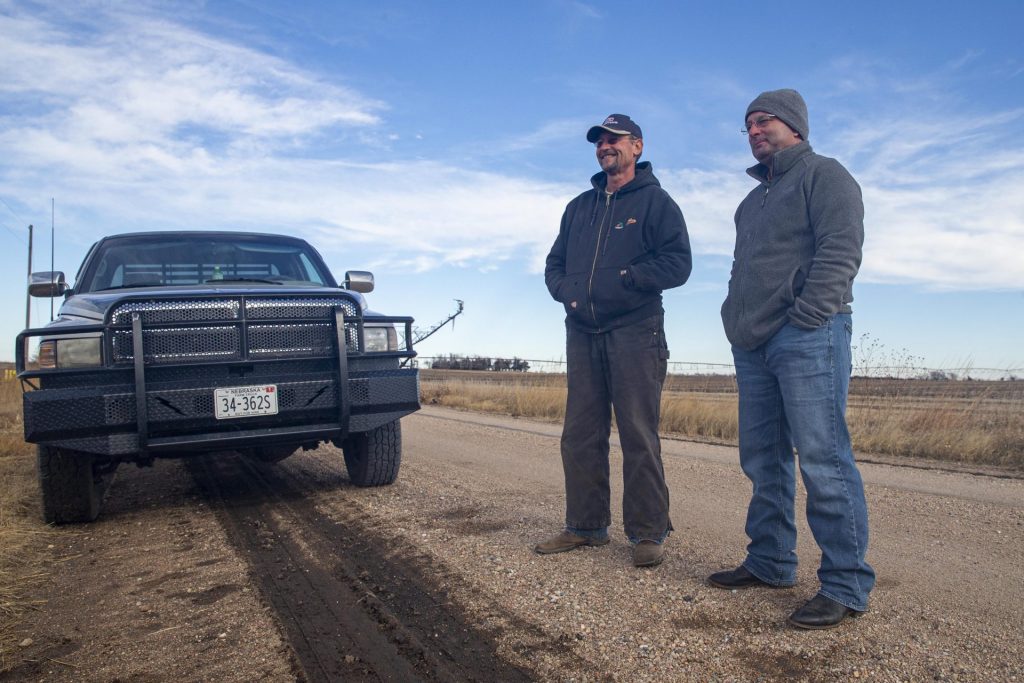
Steve Shaw is also a fifth generation producer in Clay County and has been farming and ranching for 45 years. Brian returned to the family operation after attending school at the University of Nebraska-Lincoln in the 1990s. When I met up with the Shaws they were removing cattle from a truck to graze on a cornfield near Edgar when we first shook hands.
The family became involved with the Joint Venture more than 15 years ago, when land was hard to purchase and this father and son were looking for a way to grow their family operation.
“We enjoy livestock,” said Brian. “And we saw an opportunity to see if grazing these wetlands would work. At the time, mixing cattle and water was a no-no. But we saw that a paradigm change was happening. We could buy cattle and send them to the Sandhills or the Flinthills [of Kansas] for grass, or we could keep cattle here and manage them on these wetlands.”
“From there, we began to work with the public land managers to see what their goals were,” Steve said.
“When the managers told us where they wanted to be at the end of the year, we managed our cattle from there,” said Brian.
“And they continue to be different,” added Steve. “Just like each year on the basin is different. For example, last year we had to pump water for the cows to drink, and this year we can’t keep them out of the water.”
To help with these issues, the Joint Venture provides up to 85 percent cost-share for livestock water and perimeter/cross fencing, and works with the local Natural Resources Districts to provide portable corral systems that ensure producers have the necessary infrastructure to graze these wetlands. “Through Environmental Trust grants,” said Andy, “we have leveraged funding to improve grazing management on over 6,000 acres, including the North and South Kirkpatrick WMAs. The Rainwater Basin Joint Venture also leverages funding through the Nebraska Game and Parks, U.S. Fish and Wildlife, the North American Wetlands Conservation Act, and the National Fish and Wildlife Foundation to get projects done on the ground.”
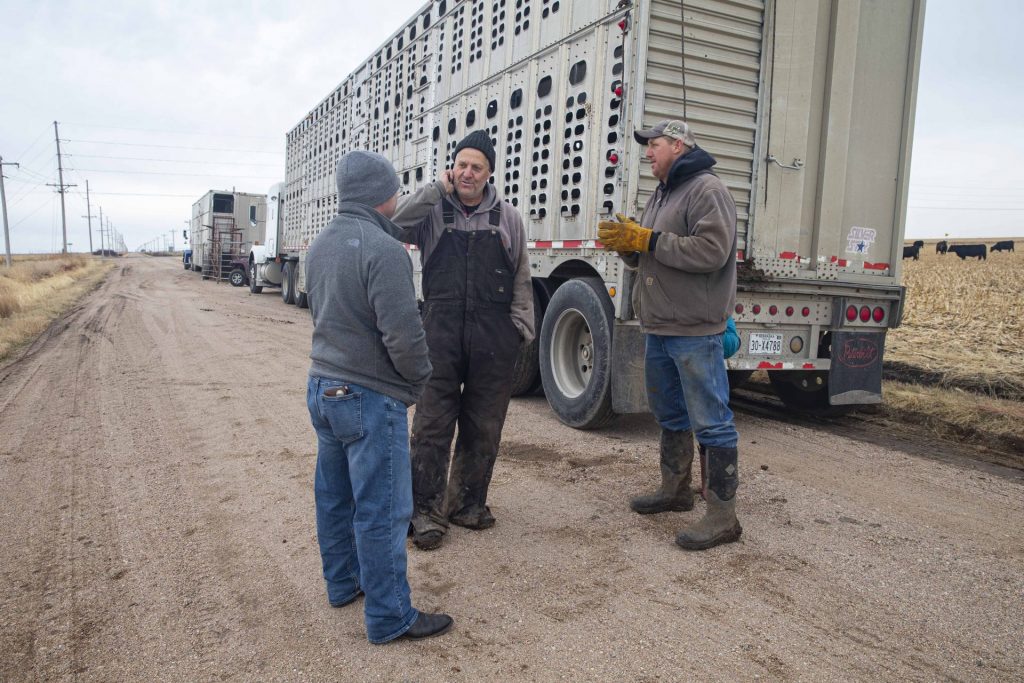
With more than 600 cattle grazing Rainwater Basin wetlands this year, Brian and Steve are a model of how an operation can grow while also benefiting wildlife, even winning the Leopold Conservation Award in 2015. They also make sure they stay in contact with area managers to make sure everyone’s objectives are achieved, which remains an ongoing challenge as well as an opportunity.
“Everyone has a goal,” said Steve, who is also the Chair of the Rainwater Basin Joint Venture Management Board. “This Board is unique and able to find solutions with multiple agencies and entities that, in the past, did not work with one another due to competing missions. The Partnership finds the common ground between partners, including the landowner, that will benefit waterfowl, shorebirds, songbirds and the producers.”
The management board members recognize the pressures that come from Washington, D.C., but the management board members also recognize the importance of local solutions to ensure funding is put on the ground to address these issues. For example, Ducks Unlimited purchases flood-prone cropland, facilitates funding for restoration, and ensures the property has necessary grazing infrastructure so it can be integrated into a private landowner’s operation. Then they sell it, using that money to buy another wetland and restore it. This ensures these lands remain in private ownership but are also managed for livestock production and waterfowl alike.
It’s an ongoing battle for every inch of wetland in an agriculture landscape, says Andy. But for good reason, as shown by the sentiment by both Kim, Jerry, and the Shaws.
“It’s remarkable how well cattle do on these wetlands,” said Steve. “I wish there were more wetland pastures so we could graze longer.”
The Collaborator – One Among Many
Andy Bishop has a simple task: “One dedicated federal employee gets other ethusiastic agency and partner organization staff to work together nicely,” he says with a laugh as we drive down gravel roads in York County.
From the agriculture industry, private landowners, federal agencies, state agencies and nongovernmental organizations, trying to manage these wetlands becomes a challenge on various levels. Especially when trying to convince landowners and outdoor enthusiasts of one of his main goals at the Venture – getting grazing back on the wetlands.
“Twenty years ago, everyone was afraid they were going to hurt these wetlands,” said Andy. “We’d buy them, and they were awesome. But they had been grazed. First thing we’d do is pull the cows off.”
When the cows were pulled off, some vegetation communities – including reed canary grass and cattails among others – would thrive, eventually choking out the wetland and diminishing its productivity for ducks and other wildlife species. “If you can spray the reed canary grass, then disk, and then spray again, you get 5- to 7-year control,” said Andy with a shake of his head. “Problem is that you have to have that perfect window to do this.” Plus, it’s cost-prohibitive.
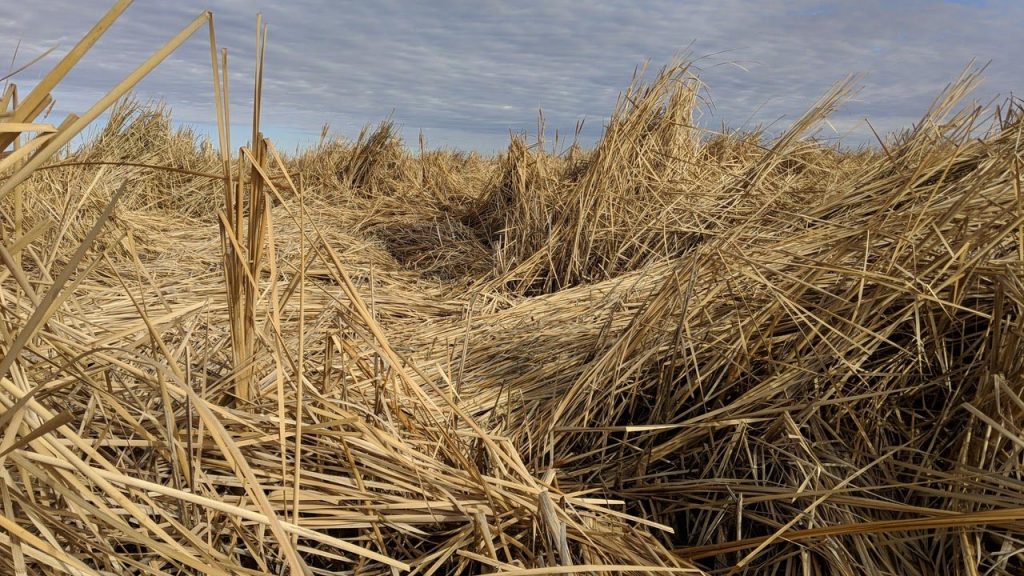
“We can do it, but it costs $100 per acre to disk it, $25 per acre to spray it, or we can get cattle at the right stocking rates and the right time, maintain these vegetation communities and be cost-positive for a local producer.”
To find these best management practices, the Rainwater Basin Joint Venture partners – including Ducks Unlimited, Natural Resources Conservation Service, Nebraska Game and Parks Commission, and the U.S. Fish and Wildlife Service – conducted a 7-year study with 30,000 data points. They let land managers make choices and monitored what they did through time. They found that they could get the same management of the vegetation communities from a graze-spray-graze-spray rotation as they could from an intense spray-disk-spray. This becomes especially important considering how long the disking process takes. “When you disk,” said Andy, “you’re working at 3 miles an hour. You don’t get a whole lot of work done.”
“Then we have to maintain it,” Andy continued. “The second you walk away from these basins in 5 to 7 years you have choked out reed canary grass, cattail or bulrush.”
So Andy hopes to rely on partners on the ground to maintain these wetlands. “Everybody wants us to do research about the ducks or wildlife,” Andy said, “but a lot of our science now is on net-farm income or its production potential. It’s a partnership trying to evolve. We’re never going to be the trusted source on net-farm income, but we have to learn as much as we can to have informed conversations and relate to area producers.”
This is the primary reason why – when Andy talks to landowners – he doesn’t talk about ducks.
“We have to show that wetlands have value to them [the landowner],” said Andy. “If the Joint Venture can do this, then everyone can benefit.” For example, Tri-Basin Natural Resources District provided financial resources to put 3,000-acre-foot into Funk Lagoon. “This provided excellent duck hunting for most of the duck season,” said Andy. “Plus great habitat in the spring. Although Tri-Basin Natural Resources District is primarily doing this for groundwater recharge, it is a win-win for the hunter, waterfowl, water quality and aquifer recharge.”
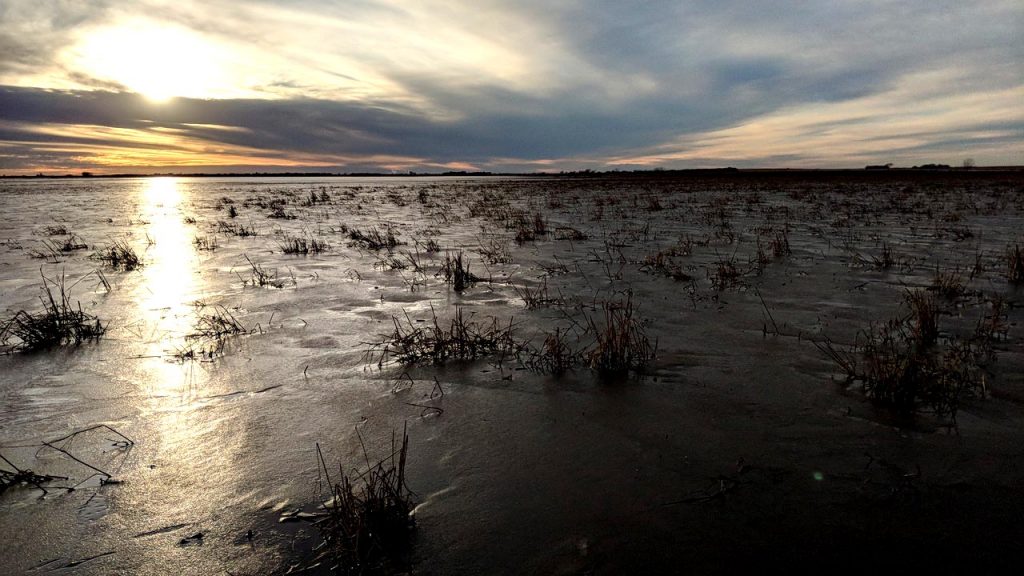
Wetlands can also help farmers. If water quality is improved – which is one of the many benefits of restored wetlands – farmers can avoid additional regulations regarding fertilizer application, tillage timing and/or irrigation restrictions.
The Joint Venture partners are also shifting efforts to improve water quantity as part of their wetland restoration work. “A guy might not be able to afford to transition a tract that contains a wetland with gravity irrigation to center pivot,” said Andy, “but they can come into our program and we’re able to provide 85 percent cost-share for these irrigation upgrades.” Recent work by the University of Nebraska-Lincoln suggested this cost-share along with other programs offered by the Partnership could be recouped in 2½ years by the producers.
In addition, for gravity irrigation conversion, the Partnership also provides cost-share for pivot upgrades and low compression tires. These modifications improve pivot travel through the wetland as well as support GPS/telemetry and irrigation prescriptions to shut off/speed up a pivot as it crosses wetland acres. This benefits the producer by reducing irrigation inputs and allows the wetlands to go through a natural wet-dry cycle that promotes desired vegetation communities for ducks and other wetland-dependent birds.
“My job is to be honest and help develop quality projects that work for the wetlands and the landowner,” said Andy, “and to have good projects with participating landowners because they talk to other landowners. Every time it is a one-on-one relationship.”
Existing and new partners recruited by the Joint Venture learn from each other and continue to cultivate unique and new perspectives and build credibility around the ideas that wetlands can be a unique and value-added part of the landscape. This diversified partnership has facilitated new conversations about grazing revenue, crop insurance, water quality and irrigation efficiency. As demonstrated by the increased enrollment of wetlands into different conservation programs supported by the Partnership, these restorations and subsequent conversations have improved acceptance of wetlands in this agriculturally-dominated landscape.
“That’s the vision of the Joint Venture Partnership,” said Andy. “We’ve gone from these one-off wetland restoration projects to what is going to work for the producer and his operation.
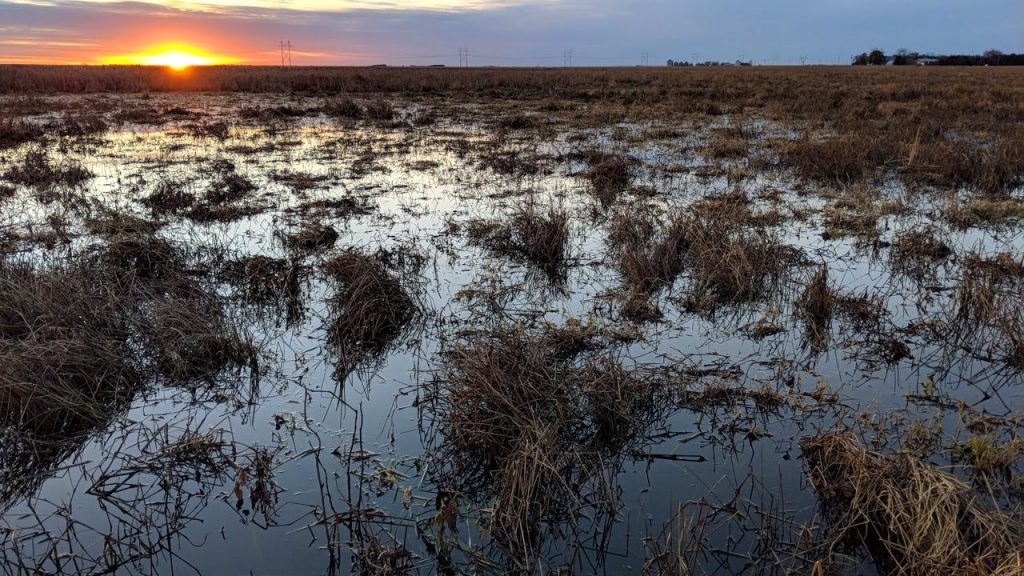
Since 1992, the Rainwater Basin has completed nearly 1,000 projects and currently has 25 on-going projects. This includes 15 agreements with private landowners for grazing infrastructure, wetland restoration and pivot modifications. To fund these projects the Partnership has 18 open grants with over $9 million in funds committed to conservation actions on private lands. “You’re fighting for every acre in the Rainwater Basin,” said Andy.
As we continued to ride down roads late into the afternoon, Andy continued to point to lands prime for wetlands or projects that had already started.
“This is a 99 percent privately owned landscape,” he said. “So how do we find conservation that fits?”
With creative and diligent minds, they’re always looking.
The Hunter
Besides a brief teal hunting story I photographed years ago, I somehow had never spent any time in the Rainwater Basin as a hunter. Man, have I missed out.
Long after the early-season rush of waterfowl hunters had invaded, and then retreated, from the Basin as cold weather approached this November, I had the opportunity to visit. My plan was to glass and stalk mallards – bringing with me jump-shooting tactics from my youth on a stretch of publicly accessible land a little more than an hour from Lincoln.
When I came to the first Waterfowl Production Area, I immediately saw a small group of mallards lift from the water and sit back down. Thus began an afternoon odyssey I won’t soon forget.
There were more than a few mallards on the water – as hundreds lifted as I made my way toward them through the ankle-to-knee-high water. Without a decoy or call in hand – an obvious error – I finished the day shooting four greenheads.
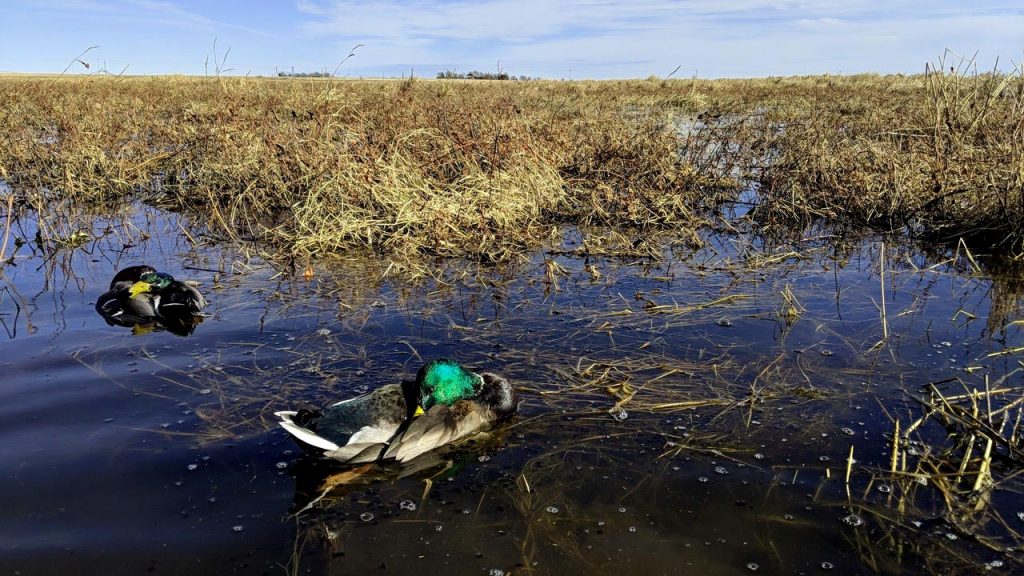
But it wasn’t the killing that I took home with me. First, it was the way-too-many cattails I had to battle through when working my way from one side of the marsh to the other – something the Joint Venture continues to work toward cutting back.
Second, all of this was being accomplished on land that I could hunt. With a state that is almost entirely private – where hunters are always fighting to find or maintain a place to hunt – I had found a place that no one else was hunting.
Plus, I knew there were a list of areas in the vicinity that I also needed to learn about, which made me care even more about those conservationists working together under the umbrella of the Joint Venture to make these wetlands better for area residents, landowners, waterfowl and hunters alike. ■
The post Fighting for Every Acre appeared first on Nebraskaland Magazine.

